| We visited the Morris Arboretum in Philadelphia. It is the official
arboretum
of the Commonwealth of Pennsylvania, whose thousands of woody plants include
many of Philadelphia's oldest, rarest, and largest trees. This
magnificent specimen is a shagbark hickory. | 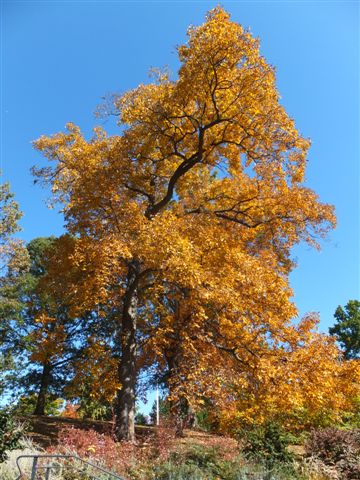 |
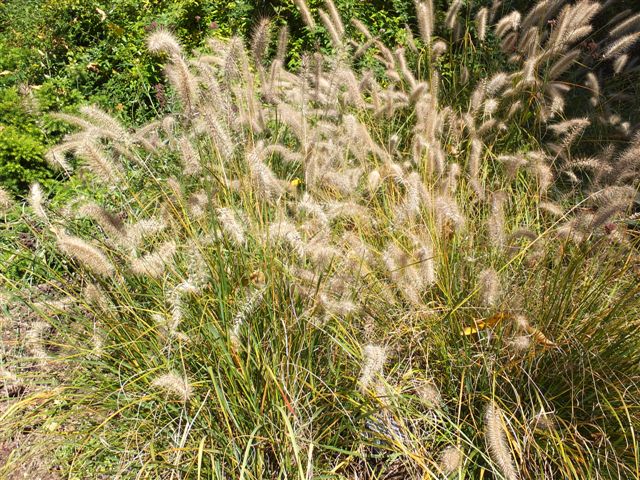 |
This is Cassian's Choice fountain grass. |
| Who needs to go to New
England when you have colours like these? | 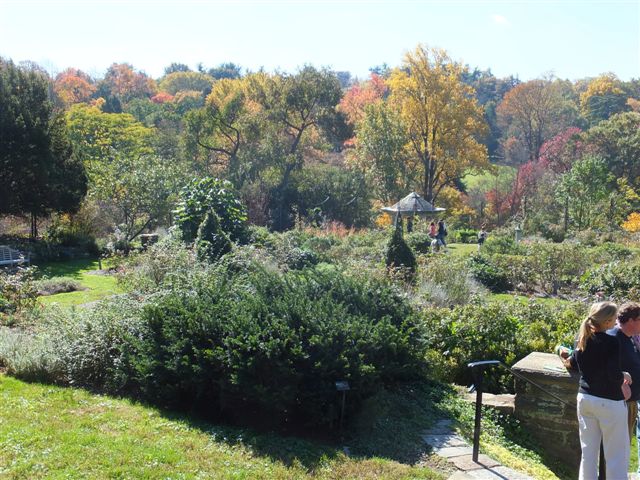 |
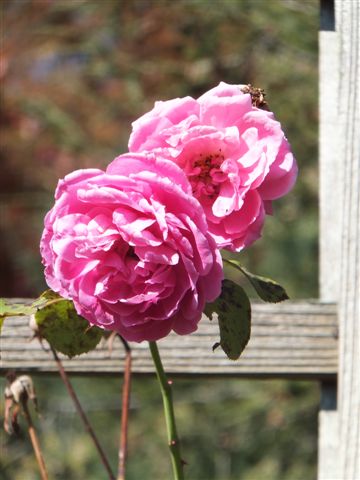 |
Most plants are past their best at this time of year but there was the odd
lingering rose like this climbing rose 'Parade'. |
| The colours were
everywhere. | 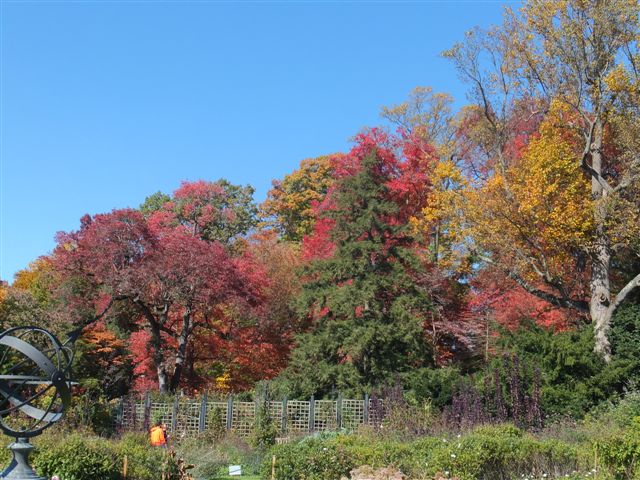 |
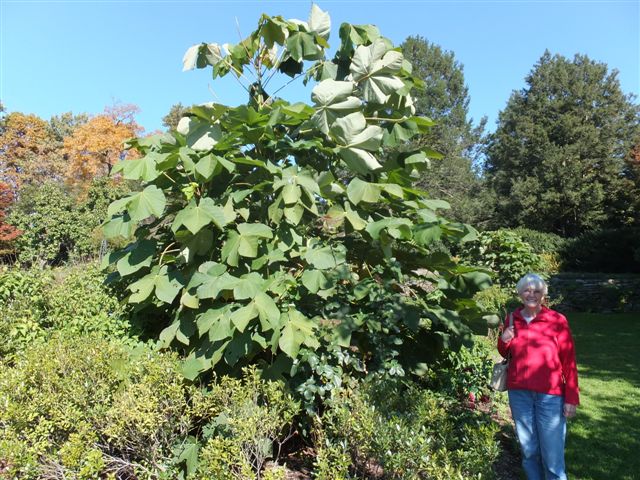 |
This is a Chinese parasol tree with Jan for scale. The leaves are huge. |
| A Variety of crab apple
called Donald Wyman. Very colourful and loads of fruit. | 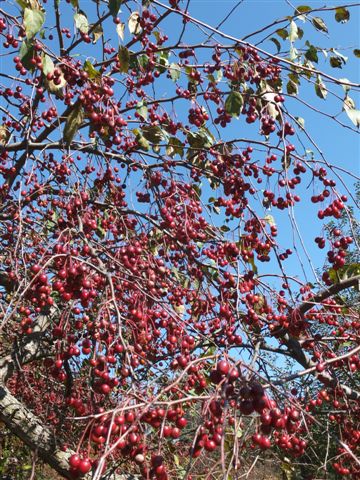 |
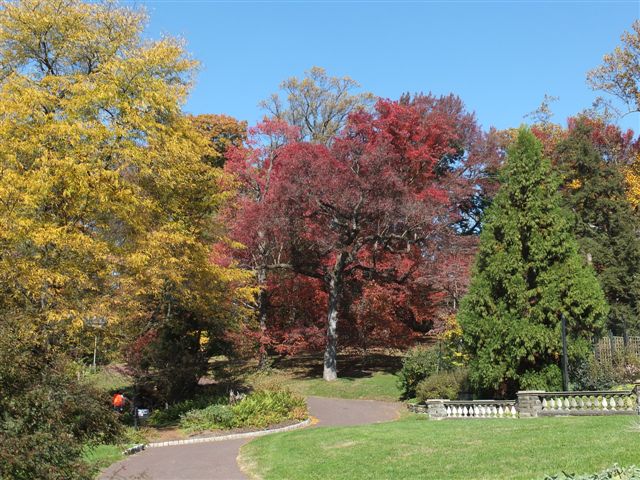 |
Some thought has gone into this planting. |
| No name but I'm guessing
a cypress. | 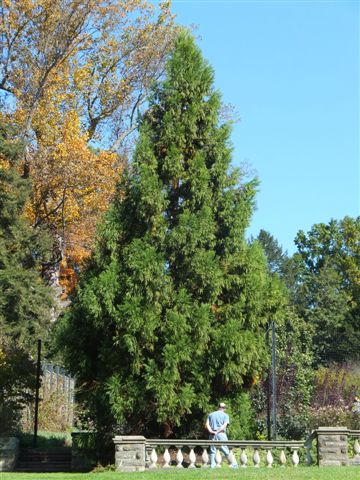 |
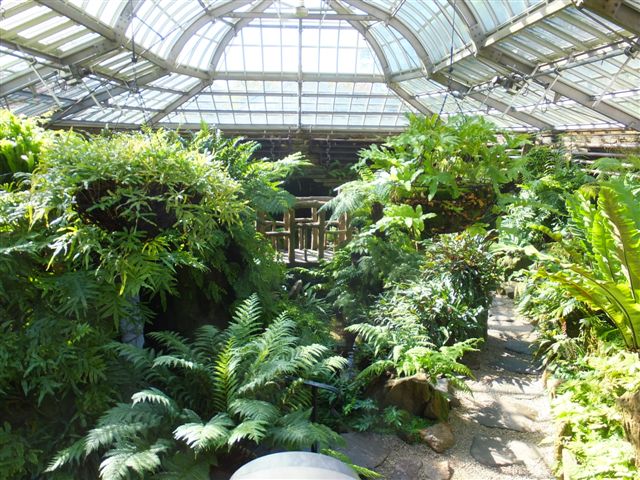 |
The fern house. There is a large collection of ferns. |
| At the back is a nursery
where they are growing on more ferns for planting and for sale at the right
time of year. | 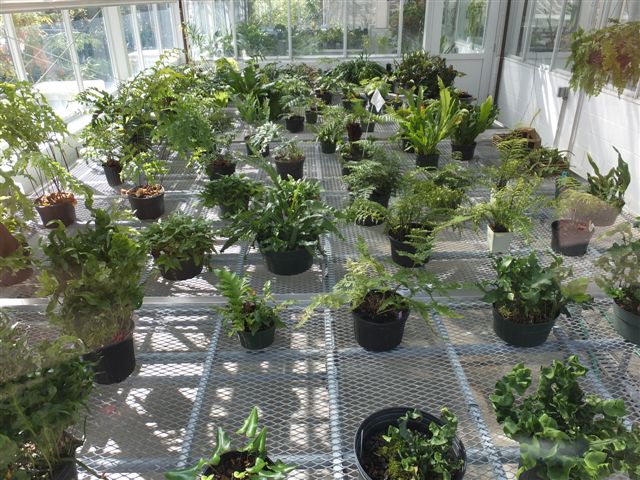 |
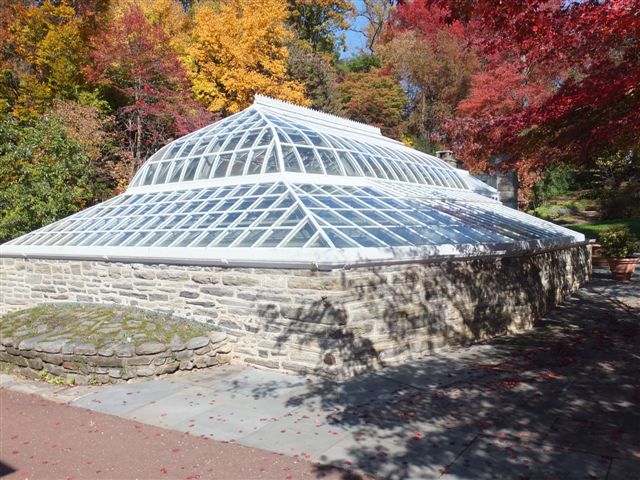 |
The outside of the fern house which was built around the turn of the
century. |
| It may be getting colder
but there are still these daisies to pollinate. | 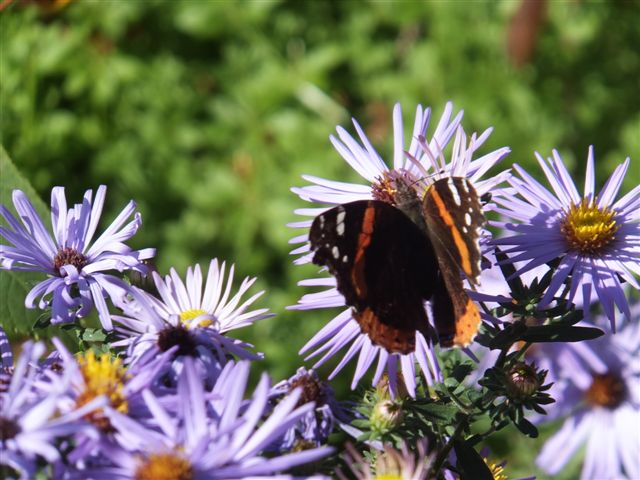 |
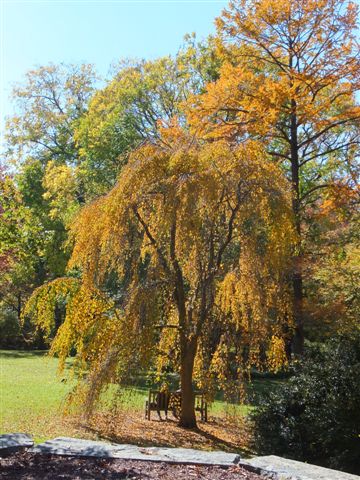 |
I do like weeping trees. This is a fine example. |
| This is a grove of dawn
redwoods. They seem to like this spot. | 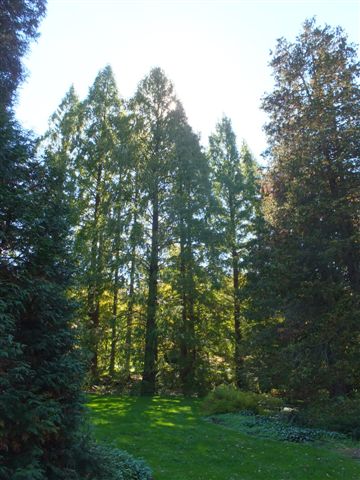 |
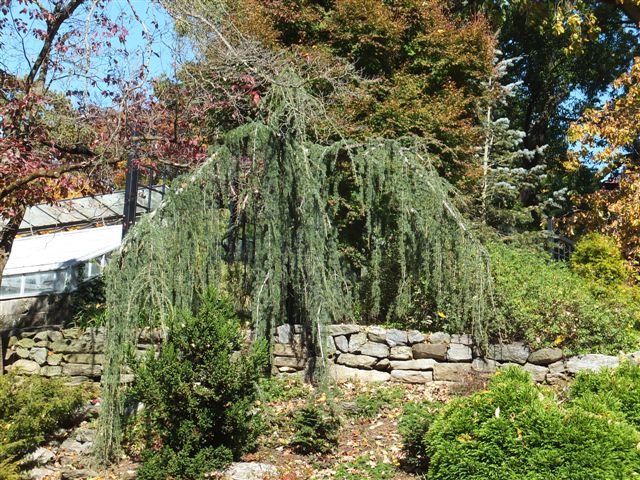 |
I want one of these. It is a cedrus atlantica glauca pendula - a weeping
blue cedar. |
| Getting a lake is a
little more problematical. | 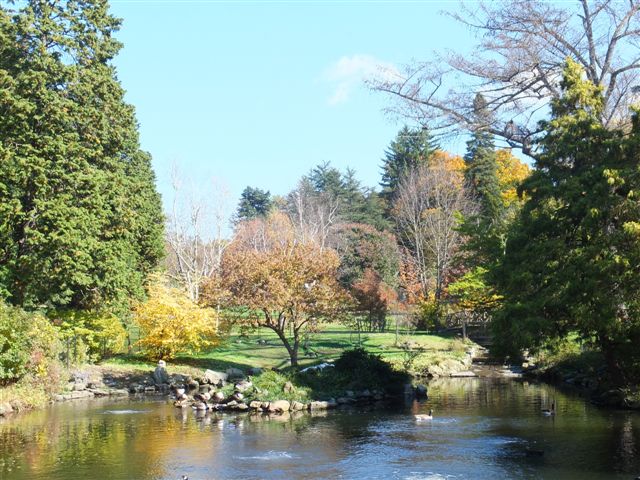 |
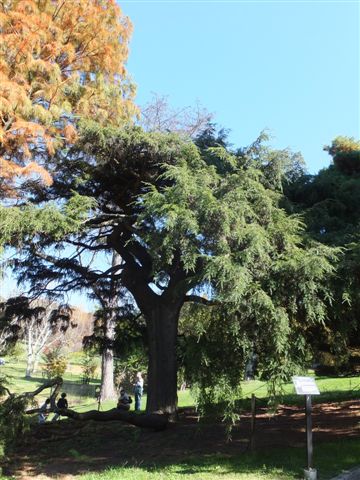 |
This is a dwarf weeping hemlock and was planted about 1905. |
| The non weeping version
of cedrus atlantica. | 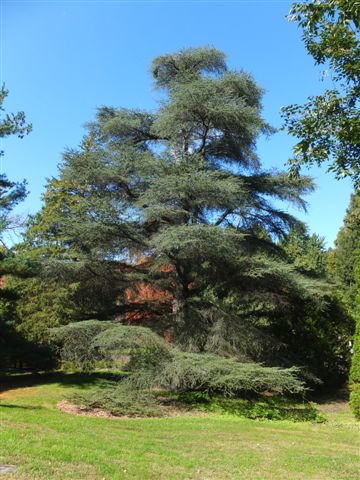 |
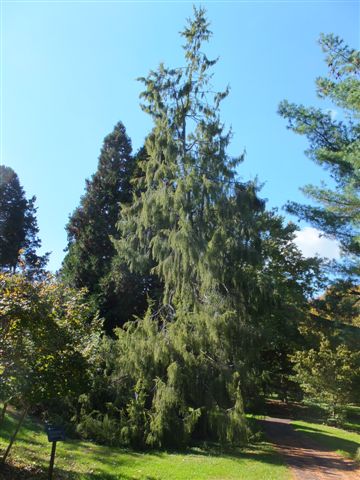 |
This is a needle juniper. Many of these evergreens look very similar but are
of quite different genus. |
| This is a weeping
European beech. The arboretum has collected trees from all round the world. | 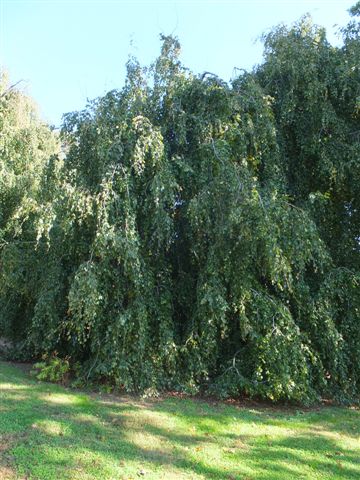 |
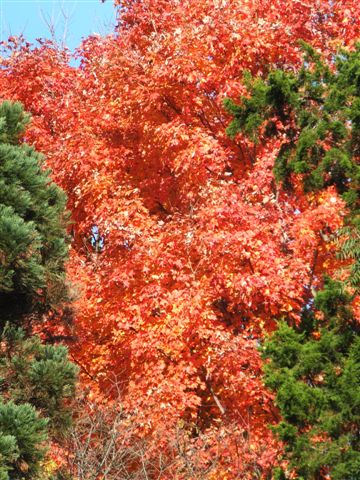 |
The colour here is just so vivid. I think it is probably a maple. |
| Some trees are just huge.
This is a Katsura tree. Originally native to eastern Asia, there is fossil
evidence that it existed in America. This example was planted between 1901
and 1909 and is the pride of the arboretum. It is also a Pennsylvania
champion. | 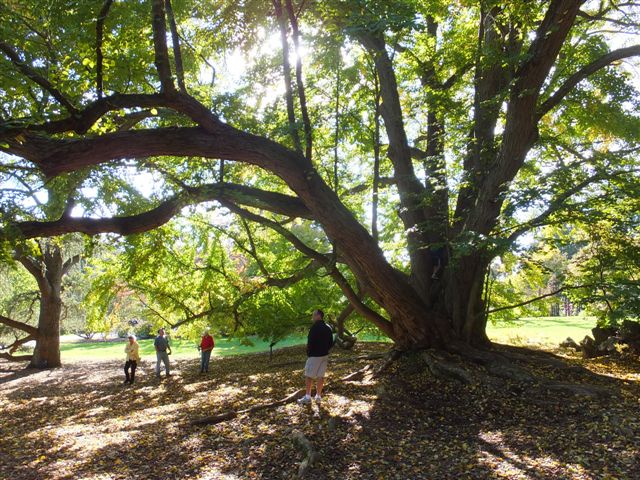 |
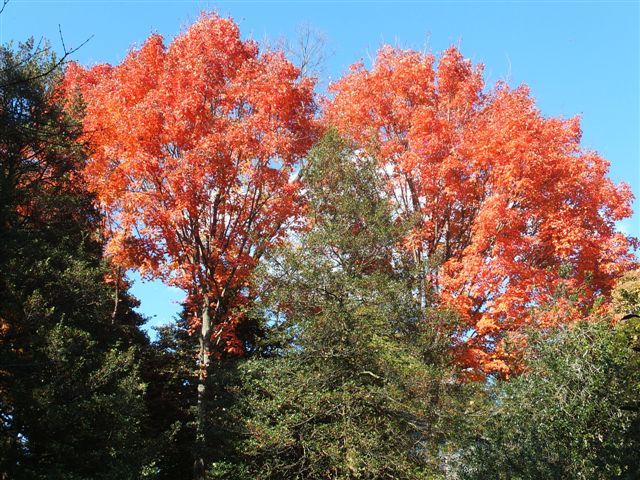 |
The colours show best as the daylight starts to fade. |
| Sometimes we seem very
small.... | 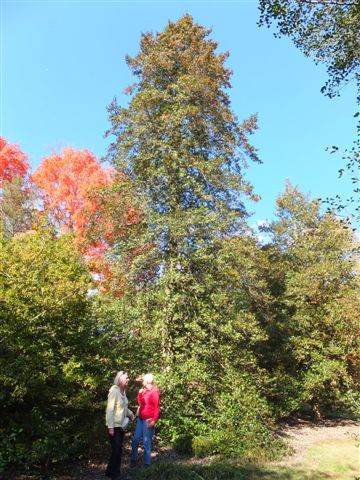 |
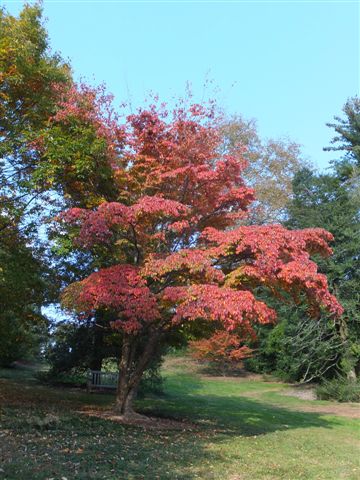 |
This may be a kousa dogwood - in which case it is rather larger than my
dogwoods. |
| Another huge tree is this
beetree linden. Not a common tree. | 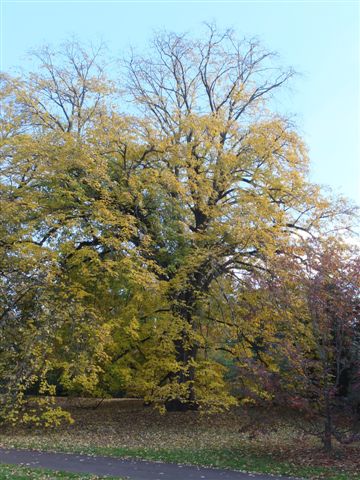 |
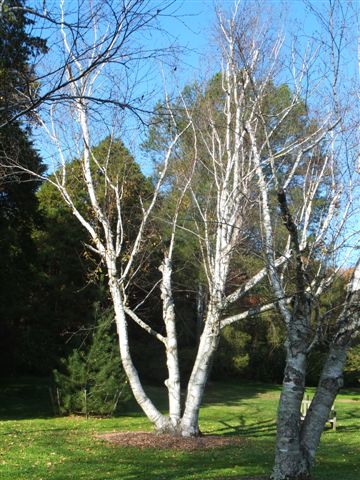 |
Himalayan birches with their characteristic white bark. |
| Leaves and berries or
they may be nuts on a European filbert. | 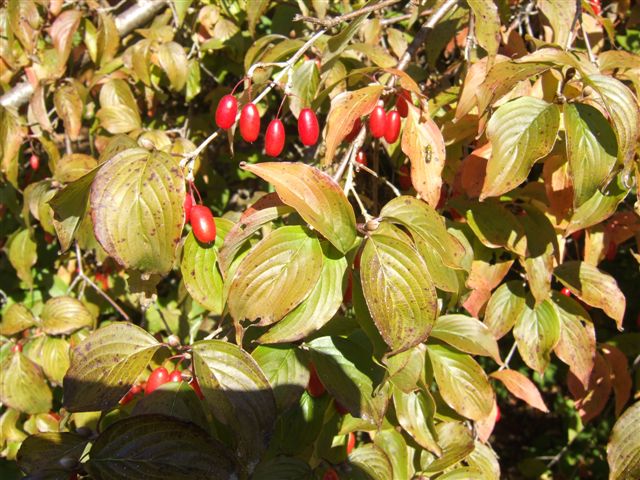 |
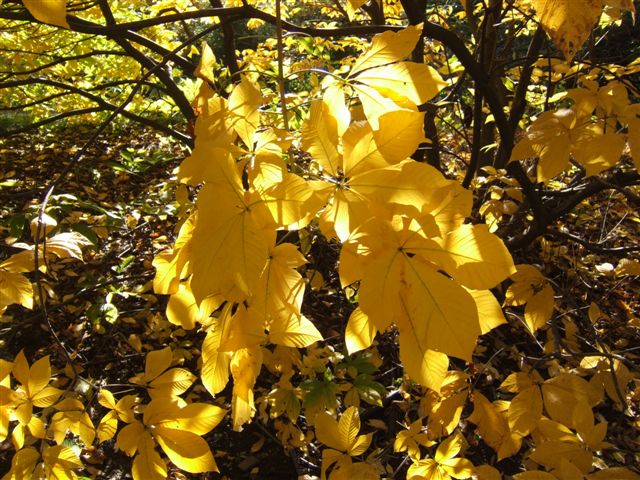 |
A last reminder of the autumn colours on this late bottlebrush buckeye. |
|